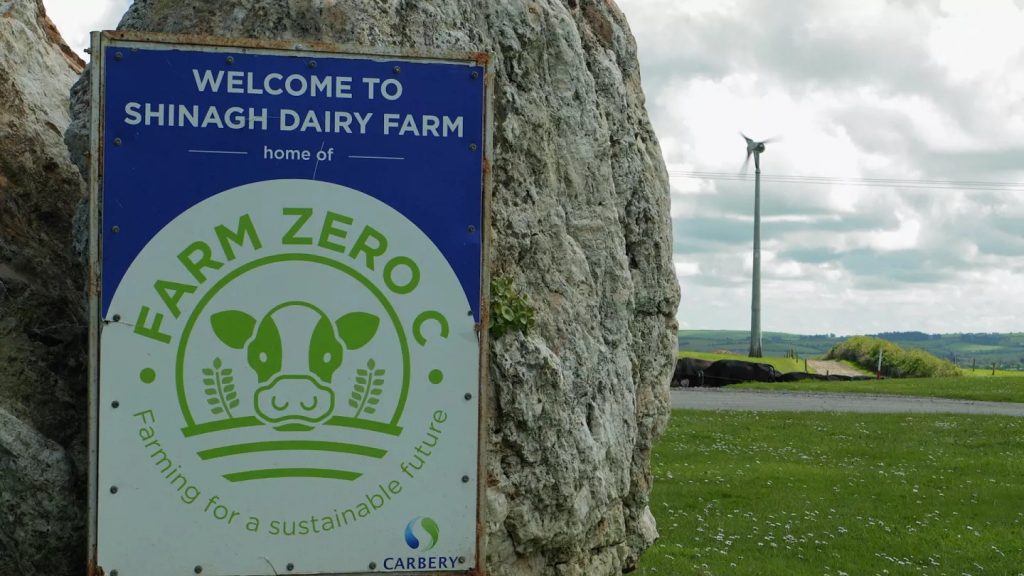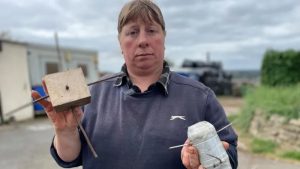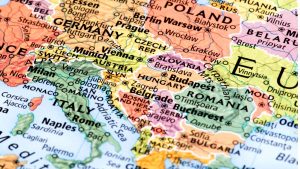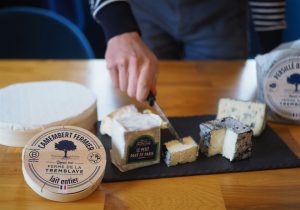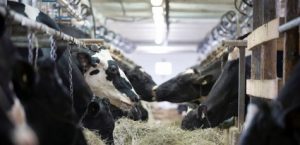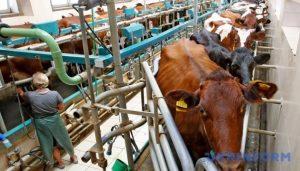Globally we had the warmest April on record, with temperatures 0.7 degrees Celsius above the 1991-2020 average, or 1.58 degrees Celsius above the 1850-1900 pre-industrial average for the month.
Europe saw a sharp contrast in temperature anomalies across the continent. It was much warmer than average in the east of Europe and at the same time, Scandinavia was a few degrees colder than average last month. Sea surface temperatures were at a record high for April.
Northerly parts of Europe saw above average precipitation in April, contrasting with drier than average areas from eastern Spain to Türkiye.
Taking stock on Farm Zero C
The Farm Zero C project has already made significant progress in its work to slash emissions and boost biodiversity, even though a lot remains to be done. “We have already achieved a 27% reduction in our carbon footprint,” explains project manager Padraig Walsh. “We’re hoping to get this to about 50 to 65% in phase two and be climate neutral by 2030.”
Hitting those targets will not be easy, principally because a lifecycle assessment at the outset of the project showed that the farm’s main sources of greenhouse gases were also its milk producers – their 250 Friesian Holstein Jersey crossbred cows.
“We could see that methane was a huge emitter for us,” Padraig recalls. “Over 50% of our emissions come from methane from cows, from them digesting their food and releasing methane into the atmosphere.“
Irish dairy farms rely on the country’s lush natural grasslands to feed their cows and produce high quality milk, yet additives given to the cows during grazing that aim to reduce their methane output are proving to be short-lived, giving only a few hours of reduced emissions, rather than days or weeks.
During winter, the team has had more luck, as the cows are indoors and additives to feed can reduce methane emissions by 7%, while chemicals added to slurry reduce methane emissions by 75%.
The project is deploying several nature-based solutions, too. The 100-hectare farm near Bandon has several multi-species fields, where they have introduced white clover, plantain and chicory together with rye grass. These improve the soil structure and drainage, sequestering carbon deeper below the surface, and reducing the need to apply artificial fertilisers to the soil, a costly and carbon-intense product.
PhD researcher Mary Kate Doherty has been following the deployment of the multi-species fields, and says it is proving very efficient. “Lots of the fields here last year that have high clover didn’t get any chemical fertiliser and still produced as much grass as the fields that did get chemical fertiliser,” she tells Euronews.
Ten percent of the farm is dedicated to boosting biodiversity – for example, areas of fields that drained poorly and often became boggy are turned into natural wetlands, grazed once or twice a year. These zones have many benefits, and soon the farm will accurately measure the sequestration potential they have, as they trial what’s known as carbon farming, which would reward farmers for their greenhouse gas mitigation services.
“This kind of area is providing a lot of benefits for the wider environment and we feel the farmers should be paid for that,” argues Mary Kate.
Building the business case
Farm Zero C is a collaborative project with many partners, ranging from the main leads – dairy company Carbery Group and science research organisation BiOrbic – land managers Shinagh Estates and Teagasc, financial partner AIB, and academic partners UCD, UCC, Trinity College Dublin, and MTU.
Bringing together a broad range of university researchers and business-focused stakeholders is important to turn the vision into reality, building a genuinely profitable climate-friendly, grass-fed dairy business model for Irish farmers to follow.
Getting consumers on board with this mission is part of the process, too, according to Padraig Walsh.
“We believe that consumers will pay a premium for our lower carbon footprint products. We all need to tackle the emissions challenge together. And if we want farmers to reduce their own emissions, they are going to need to be rewarded for that as well,” he concludes.
You can now read the most important #news on #eDairyNews #Whatsapp channels!!!
🇺🇸 eDairy News INGLÊS: https://whatsapp.com/channel/0029VaKsjzGDTkJyIN6hcP1K
